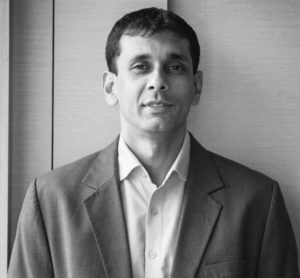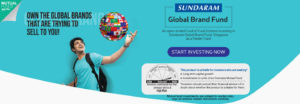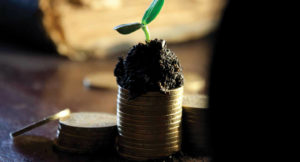Manish Shah and Gaurav Roy’s BigDecisions.com, which was acquired by News Corp in December 2014, aims to be the go-to platform in the next few years for more than 50 million consumers to make their own financial decisions.

During their professional stint in the financial services sector, Gaurav
Roy and Manish Shah realised that a lot of work was happening in two areas in the retail financial services business – on the journalistic front, which was more about information presentation with no actionable scope, and on the loan aggregation front. “A large number of those caught in the middle didn’t have access to unbiased advice. We believed there was a space for actionable intelligence, which is what we aimed to build,” recalls Manish Shah, co-founder, BigDecisions.com.
The duo set up the company in 2013 as a personal finance analytics, advisory and content platform, which was acquired in December 2014 by News Corp, a global diversified media and information services company. Explaining their services, Shah says, “We have taken a broader definition of Robo-Advisory in India, which is, giving people much more power at their end. It is not a one way discussion where the customer is a mute spectator. We are giving the customers more resources to be in control of their decisions.”
Instead of becoming a comprehensive advisory tool, the company has decided to help with key decisions where there are confusing financial questions and where the economics does not justify getting paid advice. “What’s really peculiar in India is that we expect great advice, but we expect it for free. We strongly believe that the paid advice model hasn’t been proven,” says Shah. With a target market comprising middle class and mass affluent Indians with an annual income varying from Rs. 6 lakh to Rs. 36 lakh, the company’s business is in between – where the journalistic platform ends and before the product aggregation begins. And, it is serving a market which is savvy enough to use technology in financial decision making.
The growing market
The online ecosystem is being created – be it to transact or just to aggregate information. “When we started out, there were 27 million Internet bankers in India. Two and half years since, this number touched 450 million,” says Shah. The team has a limited objective – regardless of what people find behavioural, more than three quarters of research is done online and they want to be the platform where people start that decision making process from. “Whether they use us to go ahead and buy a product or simply want to come here to understand things better and conduct their transaction offline is up to them,” states Shah. The team believes that there is a strong ecosystem where more people are comfortable doing their own home work and want to be more in control of things instead of leaving it all to an advisor. “We help them enough in their decision so that they can take that next step. We have a marketing arrangement with licensed service providers who will help fulfil the product requirement,” says Shah.
BigDecisions.com also works directly with companies in the area of consumer literacy. For example, it is a part of ICICI Prudential Mutual Fund’s consumer education initiative. It has also tied up with Future Generali India Life Insurance to offer consumers a range of content on life insurance and financial planning. Using articles, videos and calculators powered by algorithms and data, this initiative will help empower Indian consumers.
BigDecision.com’s strongest asset is the data that consumers leave behind with them, not the personal, identifiable data, but their aspirations and so on. “We are planning to work with manufacturers (of financial products) to use that data to pursue a product-fit agenda,” says Shah. Explaining further, he says, “What you see in the aggregator broker platforms is good for a standard, salaried consumer. The minute you have different defined characteristics of the consumer, like smoker, diabetic, self employed with irregular income streams, what starts to happen is most comparable sites wane down. With a large enough user base, we would like to start a conversation with different such niches and get manufacturers to make offerings for these niches instead of forcing these niches to confirm to the rest,” says Shah.
From a partnership perspective, the company believes in partnering meaningfully with the media as a lot of its traffic comes from content. “We are finding, to our surprise, that objective, non-pedantic content in this space is lacking. We are finding that using that as a hook to bring the consumer to us is working quite well. Content marketing and content sharing is also a good form of marketing,” says Shah.
“It required a lot of courage to stay with our goal and maintain our self belief in our early discussions with the investor community when they strongly questioned our business model. Having the conviction that we won’t go down the transaction space and the consumer information space is something that will be important in the years to come is one of the biggest challenges that we have faced. Sometimes you can have a point of view, but when you have to stake your future on it, you don’t always have data, but only conviction.”
![]()
Early Days
The company was bootstrapped initially. Its first product version in the early 2013 was a disaster. “Learning from those mistakes, we did a lot more ourselves between the two of us like writing algorithms, coding and design and re-launched it in the last quarter of the 2013 fiscal and after that things started to look better,” recalls he.
The company also made some successful media partnerships with Rediff and Livemint, which helped promote the fact that it was a strong, pro-consumer, free and unbiased platform. Shah believes that there is a strong misalignment in financial services in terms of rewards system and very often, consumers complain about expensive products being sold to them. “If a consumer is not paying for advice and leaves it to the product seller, there is a good chance that you are having a bad product where the seller has the highest margin. In any initiative someone has to pay for it. So, we spent a lot of time writing in many financial newspapers and platforms,” says Shah. The company has also powered the money calculators in many popular news sites.
The founding duo also knew that financial services was a very crowded space and was constantly strategising. “Questions that would keep me wake at night were “how do people get to know about us?” and “once they know about us, why should they come to us?”. We have a great algorithm and data but how does the consumer know that? This is where the partnerships (be it with media firms or with financial services firms) played a vital role. “They were large from a reach and introduction perspective,” says Shah.
The company started its discussion about raising external funds towards the end of 2013. “A lot of the early stage investors were not convinced with what we were doing especially because they felt that we were closer to the product distribution space. However, we didn’t believe in taking that path as it has a whole bunch of issues. One, cost and two, how neutral and pro-consumer you can be when you have a certain structure that involves distribution of a product,” says Shah. So they bootstrapped the company for almost a year.
Once they felt that they had established themselves, they resumed fund raising discussions in second quarter of 2014 and eventually, News Corp acquired them in December 2014. “More than looking at how our five-year business plan would pan out, we found that they seem to appreciate what we are trying to build and they acquired us. Their belief is to be invested in a strong digital India,” says Shah.
Life after the acquisition
“Culturally, we are like a startup,” says Shah and adds, “The acquisition has led us towards good infrastructure as we now have a runway laid out for us to build that product, that does justice to our consumer vision. As News Corp is looking at this relationship over the long term, it is much more strategic in nature.”
In September 2015, the company re-launched its product with some key changes on how it works on the phone. “We didn’t realise how big the phone was going to become in this space. Our product was designed for the desktop,” says Shah. They also strengthened the content by adding more videos and enhanced the features and tools for the mobile platform. Consequently, the monthly visitors have shot up to 300,000 per month from 25,000 visitors per month, a year ago. The team size expanded to 20 in the last one year and the daily visitors is averaging to about 10,000 and the company is planning to increase this number to a million a month.
The company wants to serve a large portion of such consumers meaningfully and nudge them to get off the fence and take their financial decision. “It is hard for us to define our five year plan. One thing is for sure; we want to be the starting point for consumers as they begin to form their own financial decisions,” says Shah on a concluding note.
A strategic Investor (like News Corp) vs A traditional VC Investor
- From our perspective, just the chemistry that we had with them and belief they showed in what we were trying to build worked very well. They were most positive about what we were truly trying to build.
- This is a more generic learning that I have had – some businesses are better suited for a strategic investor or partner. Some businesses require a certain amount of time to build that currency with the customer. The more traditional VC friendly businesses are those that can more quickly demonstrate a clear need and your fulfilling that need in a relatively short period of time.
- Third, there is a personal comfort with someone who comes in and says, “We are looking at this from a long-term perspective. We want to be invested and be able to get into a good business.”





